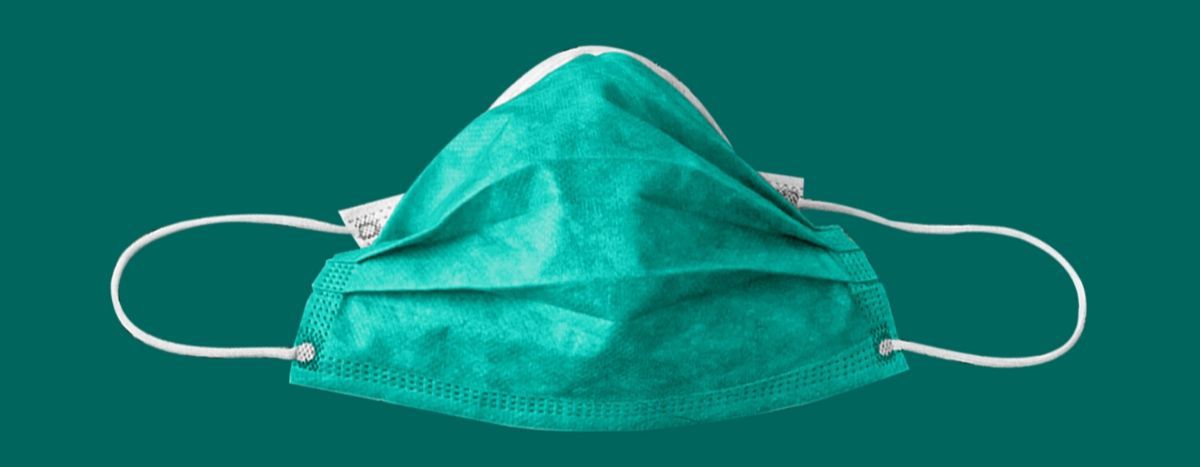
COVID-19 in France: "All our patients are in a critical condition"
Published on
Translation by:
Anna W.In France, over 7,000 people are currently in intensive care after contracting Covid-19. Places are given to those with the highest chances of survival, given the shortage of care workers, protective masks and drugs. A report from the inside:
Lucien (name has been changed) is a 28-year old trainee anesthesia nurse. He was called in as a support worker at the beginning of the COVID-19 outbreak and now works in the intensive care unit of a Parisian hospital. In an interview, he gave us personal insights into his life
Can you tell me what an average day is like for you?
I work from 7 P.M. to 7 A.M. I look after patients at all stages. They’re all struggling to breathe and require intubation (i.e. a tube connected to a respirator). The procedure can be quite difficult - we have to turn them on their stomachs for 16 hours, then onto their backs. We use other machines to support breathing as well. As there is no cure for COVID-19, we are doing clinical trials on our patients to find out if existing drugs are effective. We’re using Plaquenil (hydroxychloroquine) and Kaletra (a drug previously used to treat HIV). After work, I go home to sleep and wake up again at 3P.M. Time to eat and prepare myself for another night at the hospital.
How has your daily life changed since the coronavirus, and in what ways?
In terms of work, the nurse-to-patient ratio has changed. Normally there’s one nurse for every 2.5 patients. With COVID-19, it’s two nurses for every three patients, because there’s a greater need for care and it’s very time consuming to dress and undress before entering a room. In the intensive care unit, it's normally one in five patients who are in a critical condition. Lately, it’s every patient. We’re also transferring patients by train to the Western regions, which are the least affected in France, like Brittany for example.
What is the logistics situation like in your hospital?
In the ICU, there are five dialysis machines, used to purify blood, and 20 respirators. Normally we use one dialysis machine and 15 respirators. Today, all the machines are constantly in use. We’re using 15 year-old respirators that are pretty shoddy. We’re starting to run out of hypnotics or sleeping pills, like Propofol. Things aren’t great in terms of supply. This was already the case long before COVID-19. We’ve spent the last 12 months expressing our concern, but we were never listened to. Now it’s a real mess. We still have masks, but gowns and medicine are in increasingly short supply. Normally, we’d have a disposable gown for every time we went into a new room. With the virus, it’s one gown per room, and we re-use it. The situation is worse in private clinics where there are only two FFP2 masks -disposable respiratory protection mask - per caregiver per day. To administer the drugs, they put the same gowns on again and reuse the same syringes.
In your hospital, which groups of people are most affected by COVID-19?
Obese people. Even the young ones, as young as 20 years old. According to doctors, the virus has a stronger effect when the patient's fat levels are higher. Out of our 50 patients, 30 weigh over 100 kilos. Elderly people with underlying health conditions are no longer being accepted into ICUs. They don’t fit the intensive care criteria. They cannot be supported by the machines because chances that they will survive it are low. So I don't see many elderly people.
Everyone is clapping for carers at 8 P.M. Does that help motivate you to face the crisis?
It feels good. We are very happy because people are united and the atmosphere is good. There is also a great sense of solidarity in the ICU. Everyone is helping out, be it doctors, surgeons, caregivers or students. We even had cakes and sushi delivered to us.
What effect has this crisis had on you as a nurse, and on all caregivers?
I am used being around people who are in critical condition or dying. But what is shocking to my colleagues and I is the rate at which the health of patients is deteriorating. We have a lot of empathy for families, as they aren’t allowed to visit and must say goodbye to their relative before they go into intensive care. With COVID-19, patients need two months of care and may not return to normal for least six months.
Can you explain why the ratio of deaths and cases differ so much from country to country?
The number of positive cases is inevitably based on the number of tests carried out. Testing has been significant in Germany, where COVID-19 has affected many more young people than old people. In Italy, it affects older people more because they are generally less isolated and more integrated into society. Therefore, they are at greater risk of contracting the virus.
What is your personal opinion on the “smart confinement” approach, adopted by Germany and the Netherlands, based on the self-discipline of the population?
It is impossible to judge the relevance of this system today, as we won’t see the results until much later on. Studies on the confinement are evolving every day. But what is certain is that one day or another we must reach collective immunity. It’s the only long term solution because most of the population is going to be infected. After a while, the virus will evolve, it will be like another type of flu. We will have to be better equipped.
Photo de couverture : © Prachatai
Translated from Covid-19 : « Tous nos patients sont dans un état critique »



